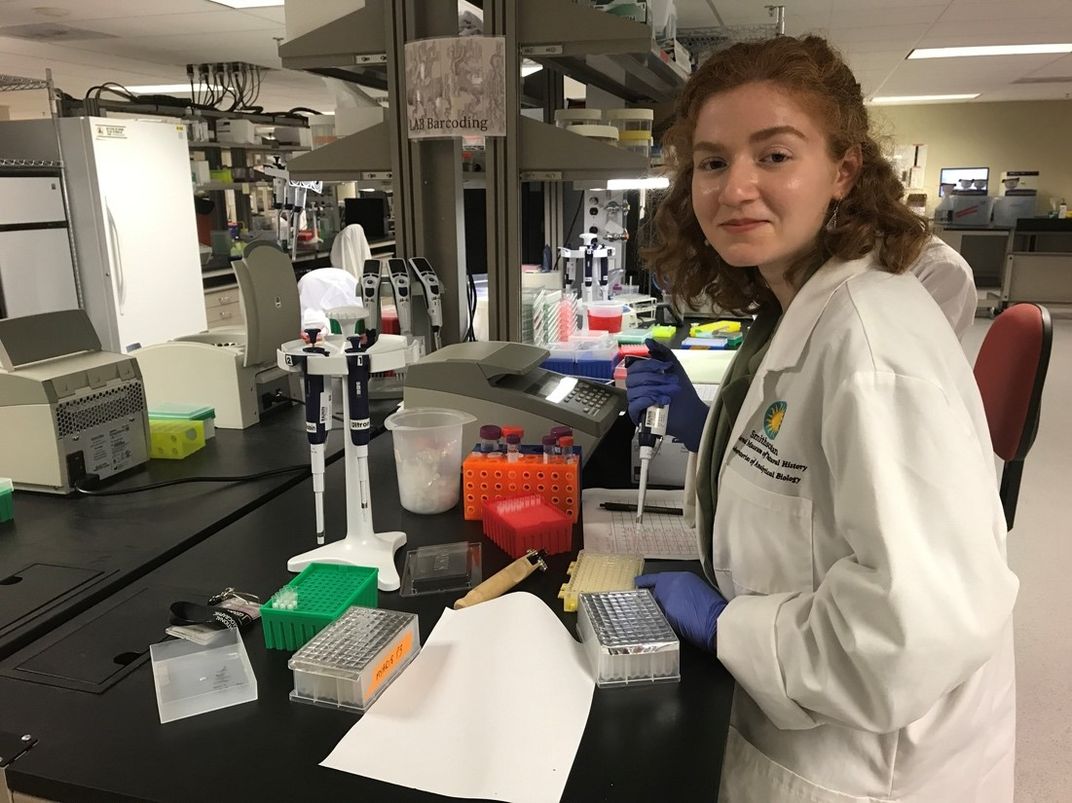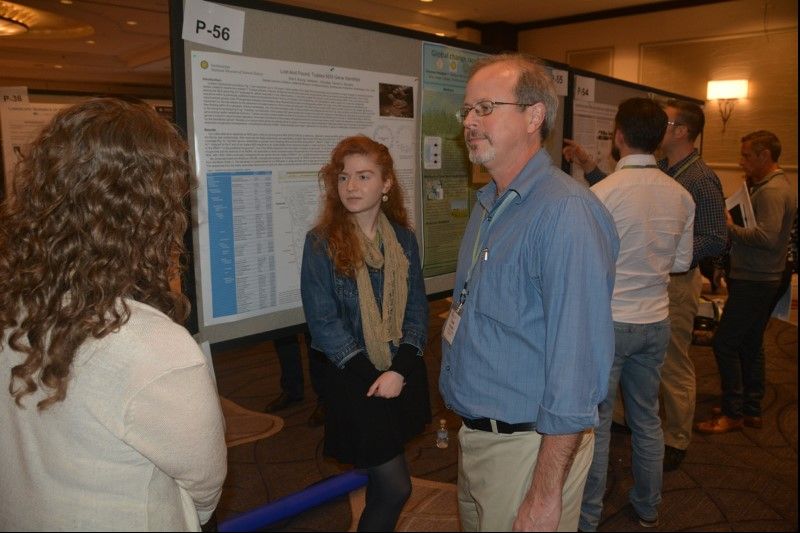NATIONAL MUSEUM OF NATURAL HISTORY
Intern Helps Find First Vertebrate With Two “Powerhouse” Genomes
The research could help zoologists understand what makes tuataras so genetically different from all other reptiles.
/https://tf-cmsv2-smithsonianmag-media.s3.amazonaws.com/blogging/featured/A_lizard-like_reptile_on_the_ground_in_the_wild..jpg)
250 million years ago, many tuataras roamed the world. Now, only one species remains. In fact, the modern tuatara, Sphenodon punctatus, is the only surviving family member of its taxonomic order, Rhynchocephalia.
Today, a new paper in Communications Biology suggests there is something even more remarkable about this little survivor. Scientists have now found that the species may have two mitochondrial genomes, making it unlike any other vertebrate in the world.
All animals have nuclear DNA found in the cell’s nucleus and mitochondrial DNA, located in the so-called cellular “powerhouse,” the mitochondria. By examining both types of genomes, scientists are building pictures of countless species' evolution throughout millennia.
“If you know the right mathematical tricks, you can find a story of evolution hidden in a dump of data,” said Ella Buring, a former high school intern for the Global Genome Initiative at the Smithsonian’s National Museum of Natural History and co-author on the paper.
But her and her colleagues’ discovery of a second mitochondrial genome complicates the tuatara’s evolutionary tale.
Two(atara) mitochondrial genomes

It all started when Buring was in high school, volunteering at Q?rius, the museum’s science education center. She was intrigued by the tuatara’s mitochondrial genome, because at the time scientists thought it was missing a few standard genes. Her interest led her to an internship with the museum’s Global Genome Initiative (GGI), where she planned to study the reptile to uncover its past.
“I was very drawn to this idea that the past tells a story, if you just know how to analyze it right,” said Buring.
At GGI, she began working with Dr. Dan Mulcahy, a former biological science laboratory technician and current research collaborator with the museum as well as head of the tissue and DNA collections at the Museum für Naturkunde, in Berlin, to analyze the tuatara’s genome.
With the help of Dr. Vanessa González, a computational genomics scientist at GGI, they analyzed existing tuatara DNA sequences and compared them to other reptilian DNA. They soon realized that the genome was not as incomplete as scientists initially thought.
While writing a paper about this discovery, the three joined an international team of scientists studying the tuatara’s genome for other abnormalities. As that research progressed, the group realized there were too many spare, mysterious sequences of DNA in the reptile’s mitochondrial genome.
“We started going deeper and ended up constructing a complete second mitochondrial genome,” said Mulcahy.
With the international team and new data from the entire sequenced genome, they identified a complete second mitochondrial genome that is ten percent different from the ‘typical’ tuatara mitochondrial genome.
Although the discovery of a second mitochondrial genome was only confirmed in a single specimen, its presence is still surprising. If scientists find double mitochondrial genomes are common in tuataras, they could use these multiple genomes to find out when each genome appeared and when it split from the other in time. The research could help zoologists understand what exactly makes the species so genetically different from all other reptiles.
From past generations of reptiles to future generations of scientists

But, the tuatara genomic discovery is more than a tale of two mitochondrial genomes. It is an example of the importance placed on mentorship at the museum. Through her internship at the Global Genome Initiative, Buring was able to be a part of an international scientific discovery and co-author of a paper. She now attends the University of Chicago, where she continues to study divergence but now for linguistics.
She still uses the scientific methods she learned while studying the tuatara’s evolutionary divergence in the laboratory — a success for the museum’s leadership, who are dedicated to training future scientists.
“Now more than ever, science, technology, and evidence-based critical thinking are essential for understanding some of the biggest challenges to our planet,” said Dr. Rebecca Johnson, the museum’s Associate Director for Science and Chief Scientist. “As the custodians of the largest natural history collection in the world, one of our most important roles at the National Museum of Natural History is in training the next generation of scientists and museum professionals.”
Related Stories:
Rare Iridescent Snake Discovered in Vietnam
Landmark Study Shares Smithsonian Bird DNA Collected Over Three Decades
Scientists to Read DNA of All Eukaryotes in 10 Years
Viper’s DNA Reveals Ancient Map of South America
Can Genetics Improve Fisheries Management

